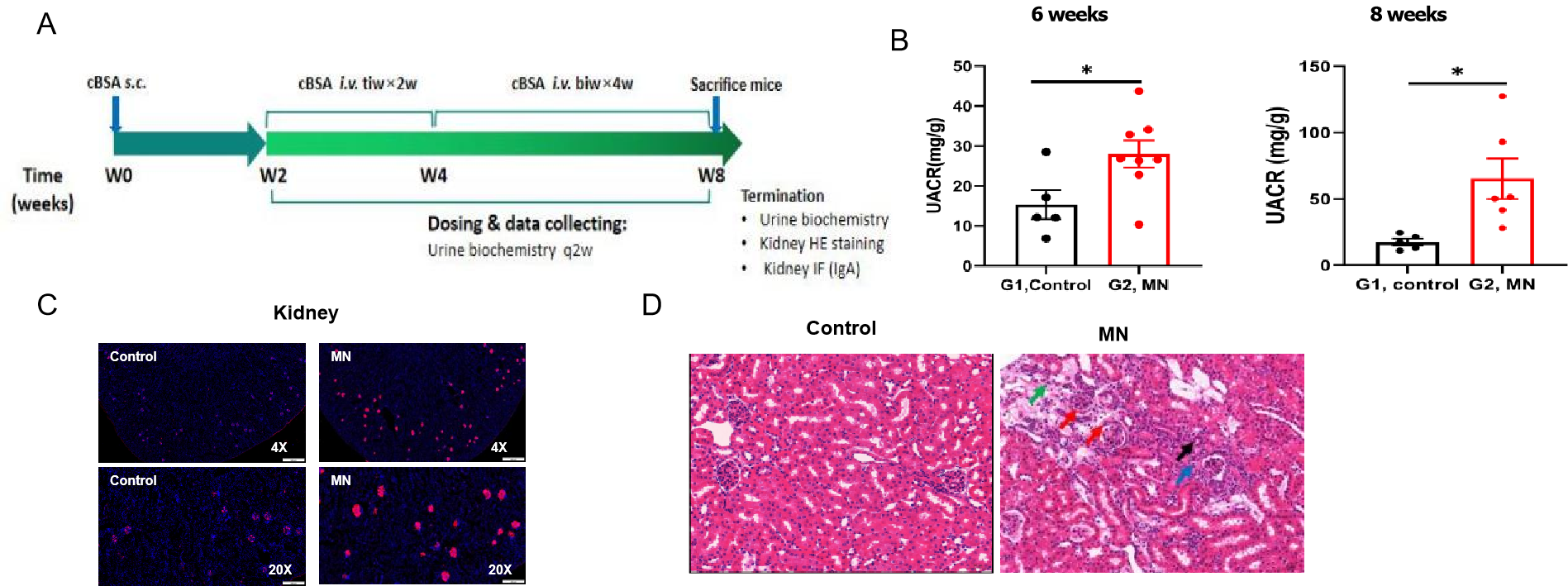Membranous nephropathy (MN) is a kidney disorder characterized by thickening of the glomerular basement membrane in the kidney’s filtering units (glomeruli). It is a leading cause of nephrotic syndrome (proteinuria, hypoalbuminemia, edema, hyperlipidemia) in adults. It can occur as a primary (idiopathic) disease or secondary to other conditions (e.g., autoimmune diseases, infections, cancers, or medications).
To help with your MN preclinical study, we are offering a validated model of MN induced by cationic bovine serum albumin (c-BSA).
cBSA induced MN
In c-BSA has been demonstrated to play a pathogenetic role in some cases of childhood membranous nephropathy, suggesting a link to environmental agents such as food. Furthermore, intravenous injection of cationic bovine serum albumin (c-BSA) into mice can cause lesions typical of the disease.

Fig 1.Characterization of cBSA induced Membranous nephropathy. A, Model strategy: cBSA in an optimum dose was given intravenously to 8-week-old female BALB/c; B, UACR was significant raised in week 6 and week 8 after cBSA induction; C, By week 8, the IgA deposition was observed in MN kindey; D, histology study of MN kidney by H&E; Thickening of basement membrane of renal corpuscle (↑); Renal tubular atrophy (↑) ; Lymphocyte (↑);Fibrous tissue hyperplasia (↑). Data presented as mean ± SEM. *P<0.05,**P<0.01;***P<0.001.

